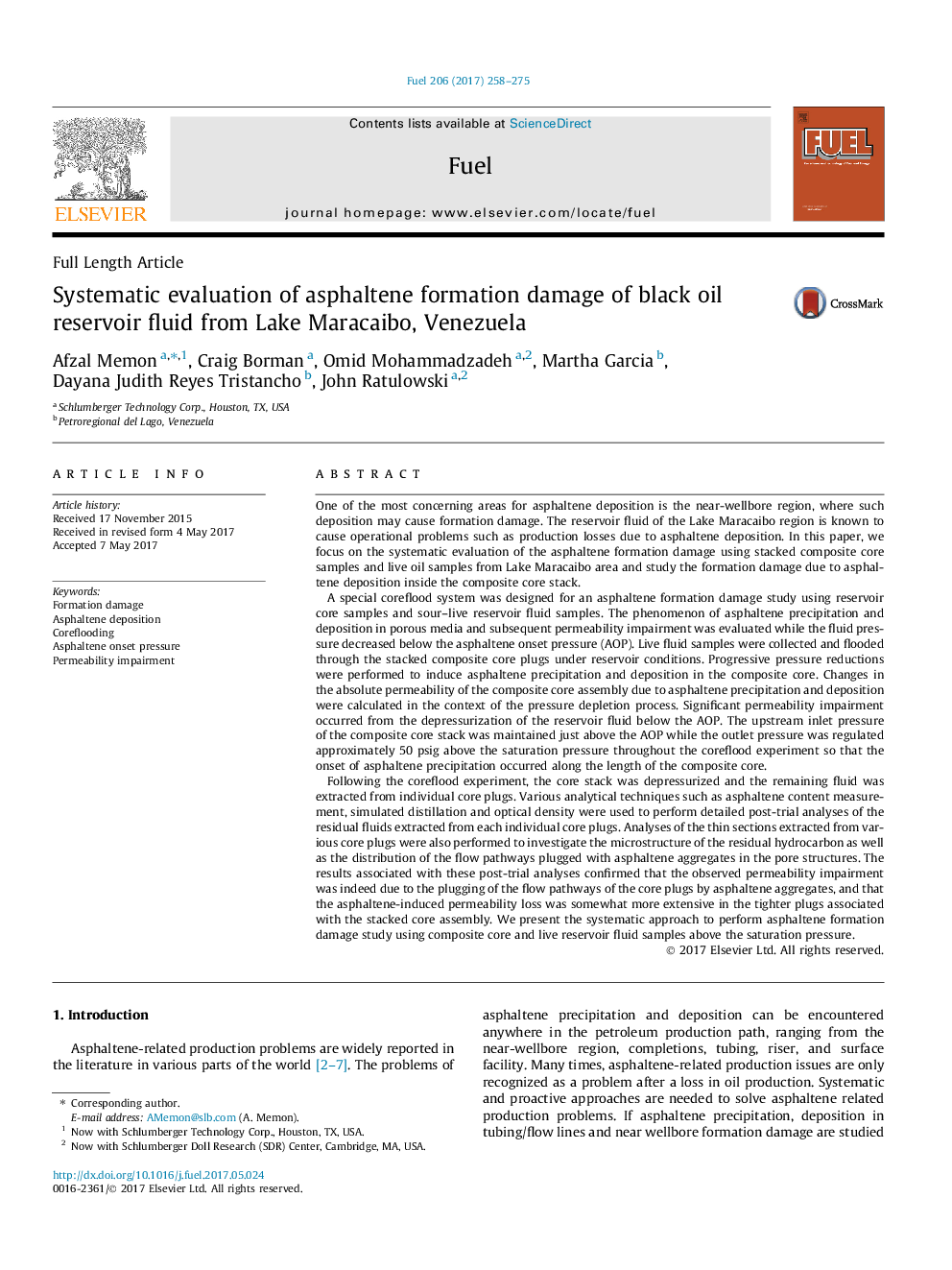| Article ID | Journal | Published Year | Pages | File Type |
|---|---|---|---|---|
| 4768571 | Fuel | 2017 | 18 Pages |
Abstract
Following the coreflood experiment, the core stack was depressurized and the remaining fluid was extracted from individual core plugs. Various analytical techniques such as asphaltene content measurement, simulated distillation and optical density were used to perform detailed post-trial analyses of the residual fluids extracted from each individual core plugs. Analyses of the thin sections extracted from various core plugs were also performed to investigate the microstructure of the residual hydrocarbon as well as the distribution of the flow pathways plugged with asphaltene aggregates in the pore structures. The results associated with these post-trial analyses confirmed that the observed permeability impairment was indeed due to the plugging of the flow pathways of the core plugs by asphaltene aggregates, and that the asphaltene-induced permeability loss was somewhat more extensive in the tighter plugs associated with the stacked core assembly. We present the systematic approach to perform asphaltene formation damage study using composite core and live reservoir fluid samples above the saturation pressure.
Related Topics
Physical Sciences and Engineering
Chemical Engineering
Chemical Engineering (General)
Authors
Afzal Memon, Craig Borman, Omid Mohammadzadeh, Martha Garcia, Dayana Judith Reyes Tristancho, John Ratulowski,
